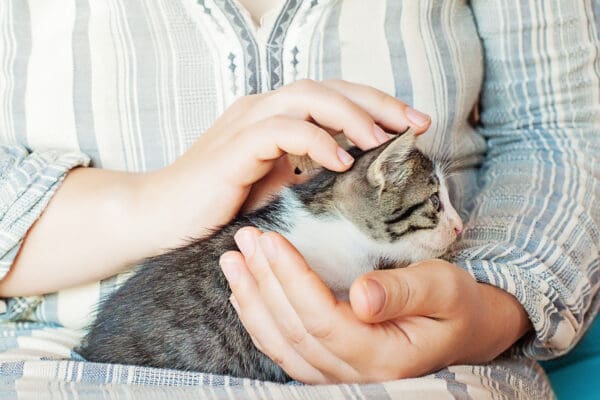
11401 NE 195th St. Bothell, WA 98011
(425) 486-9000 PHONE (425) 486-9002 fax
Notice: Below care sheet is from 2016, and may not reflect up-to-date care information.
Natural History
Also known as spiny-tailed lizards, or simply Uros, the Uromastyx are a genus of agamid lizards that hail from areas in North Africa and the Middle East. There are over 12 species of Uros, all of which are varied in color and size. Uros are popular pets due to their unique appearance and calm personality.
The word Uromastyx comes from the Greek roots ourá (tail) and mastigo (scourge), after their characteristic spiked tail. Uros range from 10-30” in length, depending on species, and can live up to 20 years in captivity with good care. To help conserve water in their dry habitats, Uromastyx have a special gland near their noses that excretes mineral salts. It is therefore not surprising to see occasional white, crusty deposits around their nostrils. If husbandry requirements are met, these friendly, herbivorous lizards make rewarding pets.
Husbandry
Housing: Uros are primarily terrestrial, and enjoy digging; they are also quite active, and need a large floor space. Hatchlings can be housed in a 20-gallon long aquarium or enclosure of similar size, although they will quickly require larger accommodations. As they grow, they will need a 40-gallon breeder tank at the very least, but it is recommended to create a custom enclosure for adults with dimensions that are roughly 5’L x 2’W x 2’H. Enclosures need to be able to withstand intense heat. Substrates can be naturalistic or simplistic. Newspaper, butcher paper, and paper towels are safe and easy to keep clean. Millet bird seed can also be used; this substrate allows for digging, and is completely edible. Alternatively, a “dig box” can be constructed which would allow a Uromastyx to fulfill all of its digging desires in one contained area within the cage. Sand is not recommended as a substrate for the entirety of the cage, as it poses a risk of impaction.
Heating: Uros control their body temperature through thermoregulation, so it is crucial for your enclosure to have a warm side and a cool side. The ambient temperatures on the cool side should be around 80-100F. The warm end should include a basking area of 110-120F during the daylight hours. Temperatures should not drop below 75F at night.
Appropriate heating elements are ceramic heat emitters or various heat bulbs (provided that any light-emitting heat bulbs are turned off at night), orunder tank heaters attached to thermostats. It is important to purchase a temperature gun, or digital thermometers that possess probes, for accurate temperature readings. Plastic dial thermometers, or any thermometer with a fixed placement, are unreliable and do not adequately gauge thermal gradients inside entire enclosures.
Lighting: UV lighting is necessary for the health of all Uromastyx, and it comes in two equally necessary forms. UVA rays are radiation waves that are needed to promote natural behaviors and stimulate appetite. UVB rays are the other type of radiation waves, necessary for the metabolism of calcium and bone health. A good way to tell the two UV rays apart is “A for appetite, B for bones.” UVB is only provided in 2 different kinds of lights: florescent lights specifically designed for UVB output in reptiles, and mercury vapor bulbs. Some bulbs sold in pet stores are labeled as being “full spectrum,” and packaging may erroneously lead you to believe that a bulb that produces UVA only is enough for a blue tongue, but unless the box specifically states that it offers UVB lighting, it will not be what your pet needs. All UVB bulbs will provide UVA, but not all UVA bulbs will provide UVB.
Mercury vapor bulbs are among the longest lasting UVB sources on the market, and these bulbs also produce heat; as a result, they are considered ideal for Uromastyx species. Fluorescent bulbs for reptiles are another option for providing UV lighting; these come in a few different styles, the most common being the coil variety and the tubular strip variety. Coil fluorescents have the shortest lifespan of all UVB bulbs, and even though they may continue to produce visible light for years, the UVB they provide will only last about 3-4 months. Strip fluorescents are similar, but can last up to 4-6 months. If you purchase a fluorescent UV bulb instead of a mercury vapor bulb, make sure you purchase one with 10.0 output to meet yourUromastyx’s needs. All bulbs should be replaced every 4-6 months, unless their output is being routinely measured with a UVB meter to ensure that they are producing adequate spectrum of lighting. It is important to allow the your lizard to get within 12 inches of any UVB light source you do provide, as the distance of the light can greatly affect the amount of UVB absorbed. Regardless of what artificial light you provide, nothing beats the power of the sun. Supervised outdoor time during warm summer days will benefit your skink tremendously.
Humidity: These lizards have very low humidity requirements, around 10-30%. Too much humidity can be fatal, so it is important to keep the substrate dry. Healthy, established adults may not even require a water bowl (though their food should always be spritzed with water prior to feeding). Dig boxes containing additive free topsoil, or slightly damp sand/peat moss/ZooMed Excavator Clay mixes, can be placed inside the Uromastyx enclosure to provide a localized higher-humidity area for your lizard without increasing the ambient humidity. These boxes simulate the humid burrows that Uromastyx take shelter in in the wild.
Diet
Uromastyx are strict herbivores, and do not benefit at all from insects in their diet. While some owners may offer the occasional insect as a treat, too much protein can result in serious health problems. Insects also have a higher potential to carry harmful parasites than do properly cleaned vegetables. We recommend against feeding any animal protein to Uromastyx for these reasons. This species does not have a high water requirement, and should obtain needed moisture from weekly soaks and fresh greens spritzed with water that are provided in the diet.
- Vegetables: Fresh, leafy greens should make up the majority of the diet, but shredded yellow, red, or orange vegetables can be supplemented as well. Collard greens, mustard greens, turnip greens, dandelion greens, spring mix, watercress, broccoli, escarole, Swiss chard, parsley, kale, spinach, romaine, carrot and beet tops, cactus pads, okra, green beans, peas, pumpkin, and squash are all appropriate. Avoid pale greens such as iceberg lettuce or celery tops. Vary the vegetables used. A single item should never make up more than 20% of their diet.
- Other: Other items that are beneficial to offer Uromastyx are dry or sprouting lentils and millet, or pelleted diets designed for herbivorous reptiles (such as green iguanas and tortoises). These items should not comprise the bulk of the diet. Think of them more as garnish or occasional variety rather than an actual meal. Uromastyx are unique in their preference for small seeds such as millet and lentils. Lentils are easily sprouted using a damp wash cloth. Dry lentils can be offered as well, and are generally eaten with equal enthusiasm. Some owners opt to feed a pellet based diet in addition to the dark leafy greens. Excellent choices to feed are Mazuri tortoise, grass land tortoise pellet, and iguana pellet. Pellet diets should not be the bulk of the diet, and should be offered no more than 1-2 times a week.
- Calcium: Captive Uromastyx require additional calcium supplementation. Calcium powder is manufactured by many different brands on the market (Fluker’s, Exo-Terra, Rep-Cal, etc; whatever brand you choose, select a product that does not contain phosphorous or vitamin D3. It should be sprinkled onto the food 3-4 times weekly for Uromastyx less than 1 year old, and 2-3 times weekly for adults.
- Multivitamin: Vitamins are also important to promote healthy body function. There are many brands that make multivitamins appropriate for reptiles (Herptivite, Reptivite, Vionate, etc). Vitamins (especially fat soluble vitamins such as A and D) are easy to overdose, and too much vitamin supplementation can actually be harmful. As a general rule, a reptile multivitamin supplement should be sprinkled on the food once weekly forUromastyx less than 1 year old, and twice monthly for adults.
Handling
On average, Uromastyx are very docile lizards, and some even seem to enjoy attention. However, it can take some time to tame a young lizard to that level of trust. Hand feeding is an excellent way to condition your lizard to your presence. Gentle handling and slow movements during all handling sessions are important. Uromastyx rarely bite, but all lizards have the capability to do so. A particularly fructuous individual may also whip its tail in protest.
Common Medical Issues
Tail Rot: Keeping a Uromastyx in an enclosure that is too moist, or failing to dry them off after a soak, can lead to so-called “tail rot”. This “rot” is either bacterial or fungal infections that can build up in the moist tail crevices of a Uro’s spiny tail. The tail turns dark and can sometimes fall off if not treated. A trip to a qualified reptile veterinarian is always advisable in these instances.
High Protein Diet: Excess protein can be hazardous to Uromastyx because it over-taxes the kidneys and liver. Over time, too much protein can affect the function of these organs. Strive to keep the amount of protein from plant foods low by avoiding excessive feeding of beans and other legumes. For most species, insects should not be part of the Uromastyx diet. They are unnecessary at best, and dangerous at worst.
Metabolic Bone Disease: Also known as MBD, this is a term used to describe a number of disorders related to the weakening of bones or impaired system function caused by an imbalance of calcium, phosphorus, or vitamin D3. It is one of the most commonly seen health problems in many lizards, and is often the result of inadequate levels of calcium in the diet, or improper UVB lighting, which is essential for calcium absorption. Symptoms of MBD range from the mild (lethargy, lack of appetite) to the severe (rubbery bones, spinal deformities, tremors and twitching of the extremities). Veterinary care is a must for any Uromastyx with suspected MBD.
March 30, 2015
Content of this Care Sheet Courtesy of:
The Center for Bird and Exotic Animal Medicine
11401 NE 195th St. Bothell, WA 98011
(425) 486-9000 PHONE (425) 486-9002 fax



